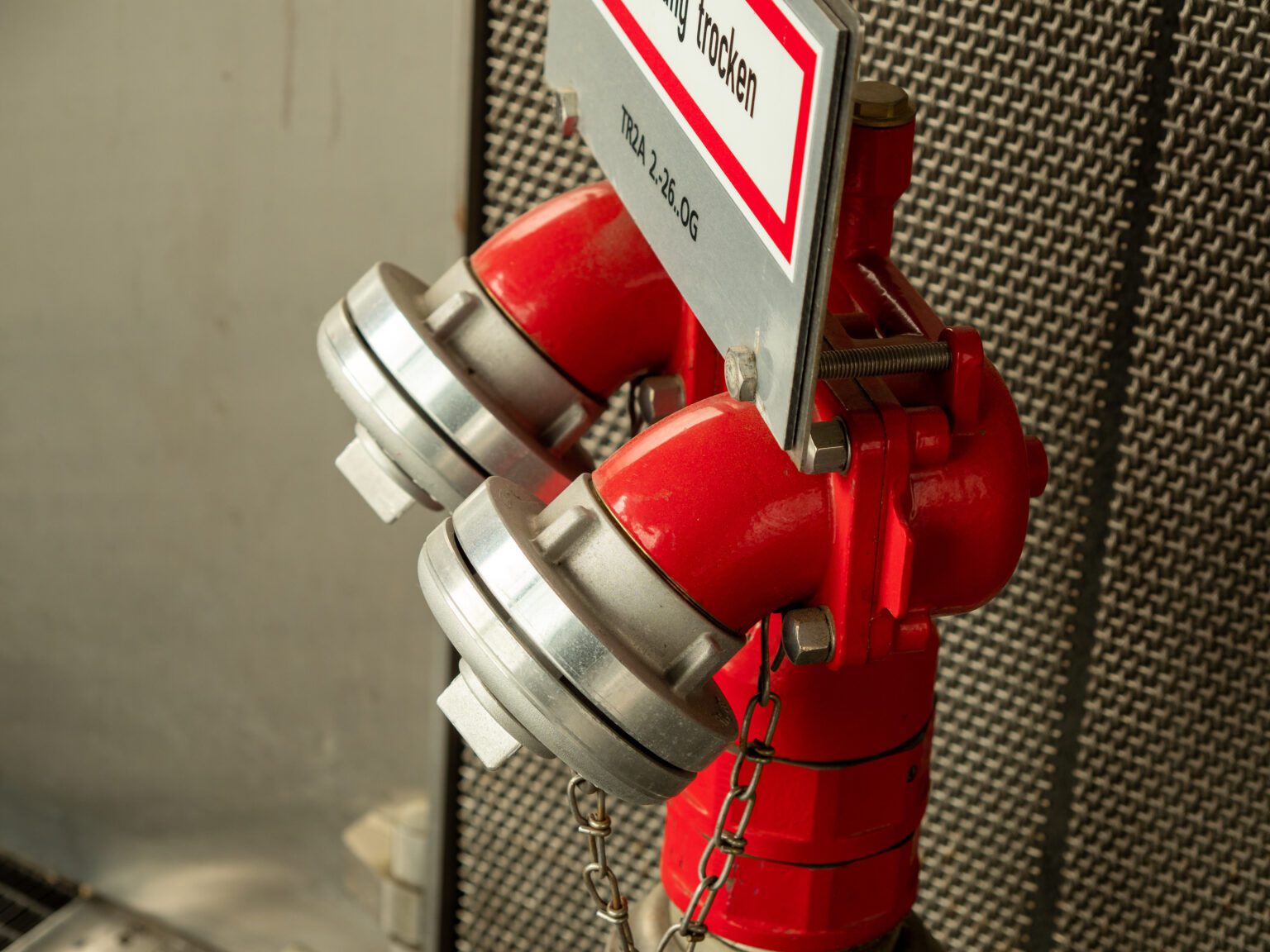Extinguishing water technology is an important component of preventive fire protection concepts and contributes to being able to act quickly and efficiently in an emergency. What are the different extinguishing water systems and their requirements?
Extinguishing water systems and building law requirements
Special building law requirements apply to extinguishing water systems. The planning and installation of extinguishing water systems must be carried out by specialised companies in order to ensure the safety and effectiveness of the systems.
Risers and wall hydrants
Riser pipes, also known as wall hydrants (dry), are permanently installed extinguishing water pipes inside buildings. In the event of a fire, they enable the fire brigade to quickly transport extinguishing water to the required floors without having to lay fire hoses first. Connecting the fire engine to the pipe system enables an immediate water supply and saves important time for the extinguishing process and a possible rescue of people.
Wall hydrants (wet) serve both as an aid for first responders and as a water supply for the fire brigade in the event of a fire. They can be combined with other fire extinguishing equipment and thus offer additional advantages.
Different hydrant systems
Type F hydrants have a hose connection for the fire brigade and must be operated separately from the drinking water network. Type S hydrants are used exclusively for self-help and cannot be combined with fire service hoses due to the smaller pipe diameter. Separation from the drinking water network is not required here.
Drinking water separation stations
The Drinking Water Ordinance stipulates the separate installation of drinking water and extinguishing water systems. Wet and dry stations are used for this purpose, in which the extinguishing water pipes are kept empty for reasons of hygiene and frost protection. In the event of a fire, the pipes are flooded with drinking water from the mains. Built-in control systems with emergency power supply ensure smooth operation.
Pressure boosting systems
Pressure boosting systems are used to achieve the minimum flow pressure for extinguishing systems. They increase the flow pressure in the pipe network and thus ensure the smooth operation of extinguishing systems.
Hydrant types (above-ground and underground hydrants)
Above-ground hydrants are used for the simple supply of extinguishing water from the public water supply network and support the fire brigade's extinguishing work. They are installed by the local authorities and are easily accessible.
In contrast, underground hydrants are less conspicuous. They are embedded in the road and fitted with a hydrant cap and a cover. If necessary, the cover can be opened with a special spanner and turned to the side so that the hydrant is accessible to specialised personnel.
Extinguishing water technology is an essential component of preventive fire protection concepts. The various systems such as wall hydrants, risers, hydrant types and pressure boosting systems help to ensure that action can be taken quickly and efficiently in the event of a fire. Compliance with building regulations and the Drinking Water Ordinance ensure the safe and reliable installation and utilisation of extinguishing water systems.
